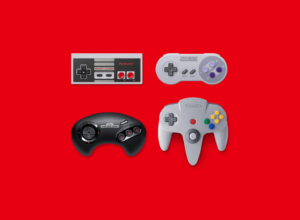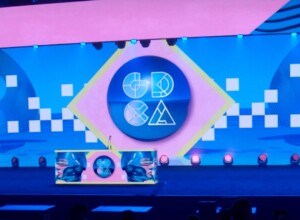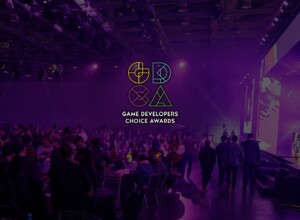Nintendo is about to release its first VR product in 24 years, but is it a gimmick, or a sign of things to come?
This week I’m buying my first Nintendo Labo product: the snappily titled VR Kit – Starter Set + Blaster.
The appeal of Nintendo Labo has always been there, but without a gaggle of children to entertain there’s been little reason for me clutter up the Thumbsticks office with yet more Nintendo peripherals. However, the prospect of finding out what Nintendo’s design teams can do with VR is too intriguing for me to pass up, even if it is in the form of a self-assembly cardboard kit.

The two Toy-Con sets released this week include a bunch of mini-games and experiences that Nintendo specifically term as ‘simple, shareable VR’. It’s a statement designed to temper our expectations, and that’s fair enough. The Nintendo Switch, for all its flexibility, is never going to be a VR powerhouse. Despite positive reports from recent preview events, the console lacks the horse power and screen resolution to serve up a VR experience comparable to PlayStation VR, never mind anything found on the HTC Vive or Oculus Rift.
The attraction comes from seeing what Nintendo can do with virtual reality gameplay, and how that might influence the company’s future products.
With these caveats in place, it came as no surprise to find out that a bunch of “bite-sized” VR mini-games will be added to Super Mario Odyssey as free DLC. What was a surprise, however, was the announcement that The Legend of Zelda: Breath of the Wild will become fully playable in VR. It’s one thing to create a few throwaway Mario games, but to casually make one of Nintendo’s most expansive games a full virtual reality experience is mind-boggling.
Based on what we know, Zelda’s VR mode will likely run at 30fps, way below the frame-rate typically required for comfortable VR performance. The fact that the headset also needs to be held up to the eyes by hand is also an issue. (Although I suppose Labo supports home-brew solutions by its very nature, and the Labo Robot Kit head strap would probably do the job.)
We tend to assume that Nintendo has cooked up some magic to overcome these challenges, but there’s a danger the end result will be a somewhat sub-par offering.
And that would be frustrating for two reasons. Firstly, there’s a real opportunity with the Switch to widen the appeal of high-quality VR gaming to a new audience. Secondly, a broken, or poor experience is frankly no way to treat one of Nintendo’s most beloved franchises.
In all probability, the Zelda VR mode will be a supplementary treat. Something to turn on when you want to savour the view from the top of Satori Mountain. But is that really what we want?

It’s also possible that Nintendo is testing the water for the next iteration of Switch hardware. Rumours are circulating that two console revisions will be released later this year, one of which will be positioned as a lower-end device to replace the Nintendo 3DS, and the other aimed at “avid gamers.”
With a little more power and an improved screen, there’s no reason why a ‘Switch Pro’ can’t be a capable VR device. Virtual Reality support would be a tangible point of difference over the current Switch model, and a tempting upgrade for existing owners.
At last month’s GDC, I attended a fascinating talk by Sony’s Nicolas Doucet. He spoke about the tricks and techniques the studio used to create the wonderful Astro Bot Rescue Mission. It’s exactly the calibre of game you’d expect from first-party Nintendo. So while it’s great to see them return to VR for the first time since the days of the Virtual Boy, the worry is that it’s just another brief flirtation, which would be a real shame.
I’ll keep my expectations in check when I build my Labo kit this weekend, but I’ll also hope that Nintendo has two stereoscopic eyes on the future, and that full, ground-up VR experiences will become part of the company’s offering.






